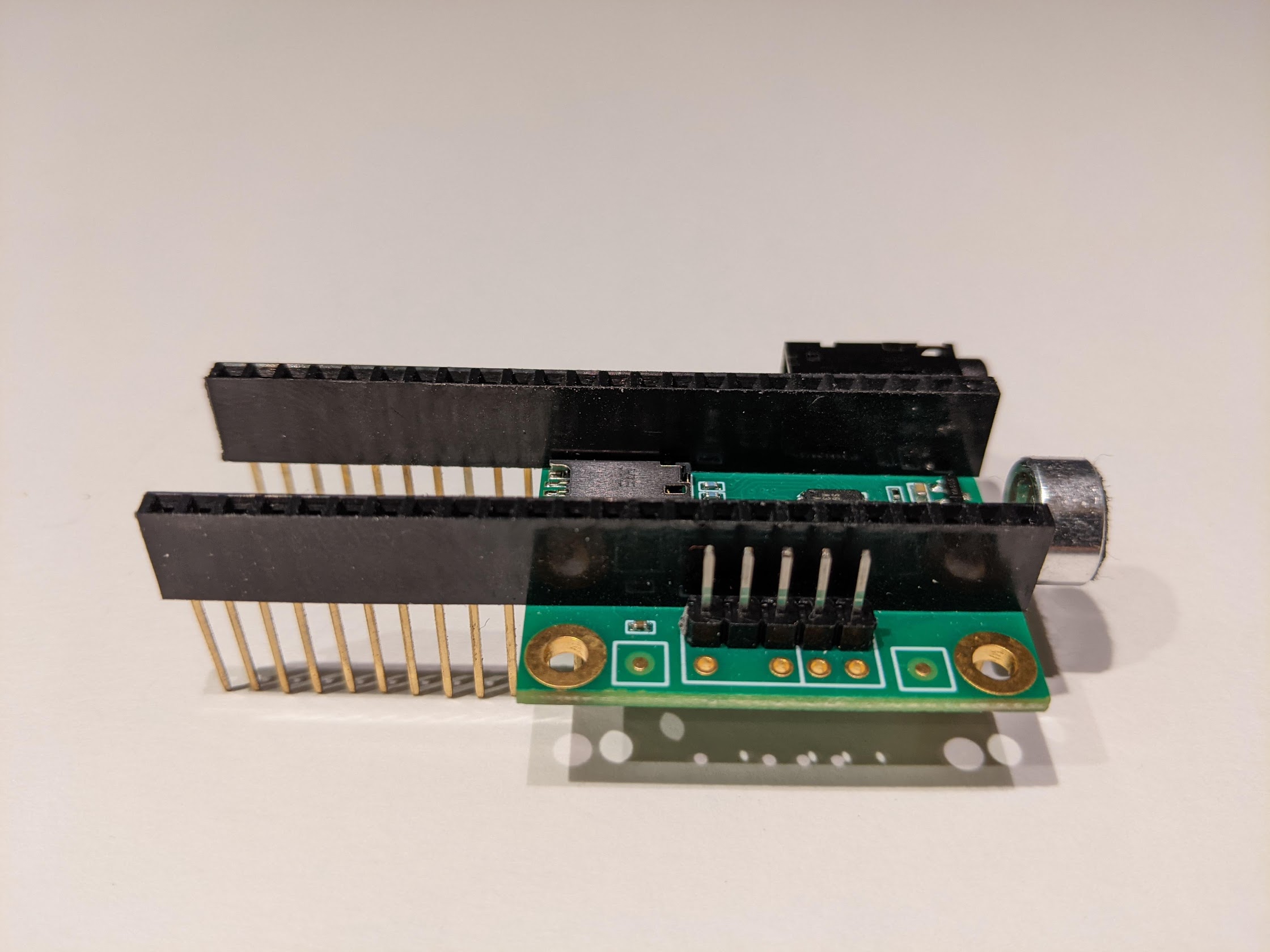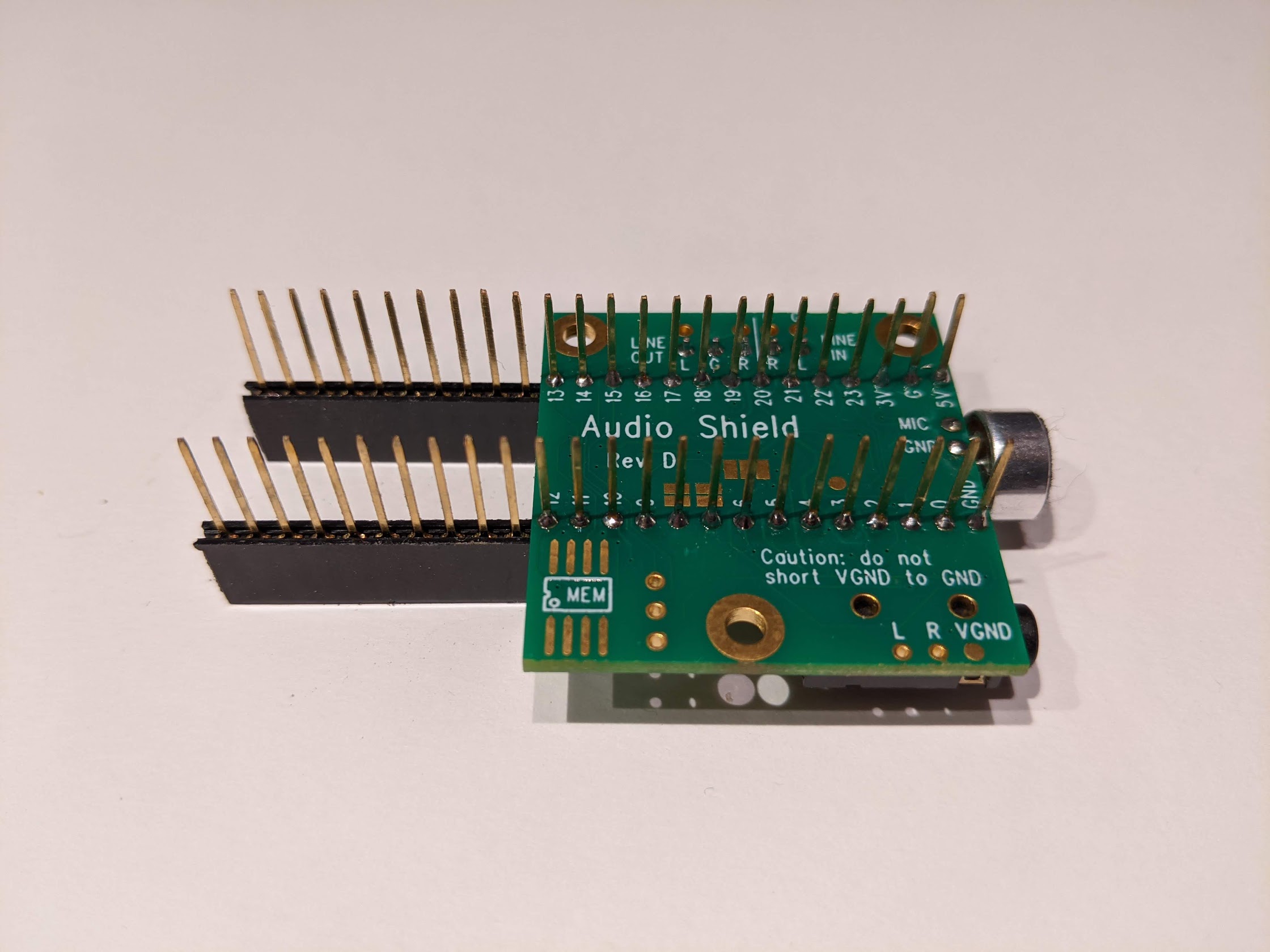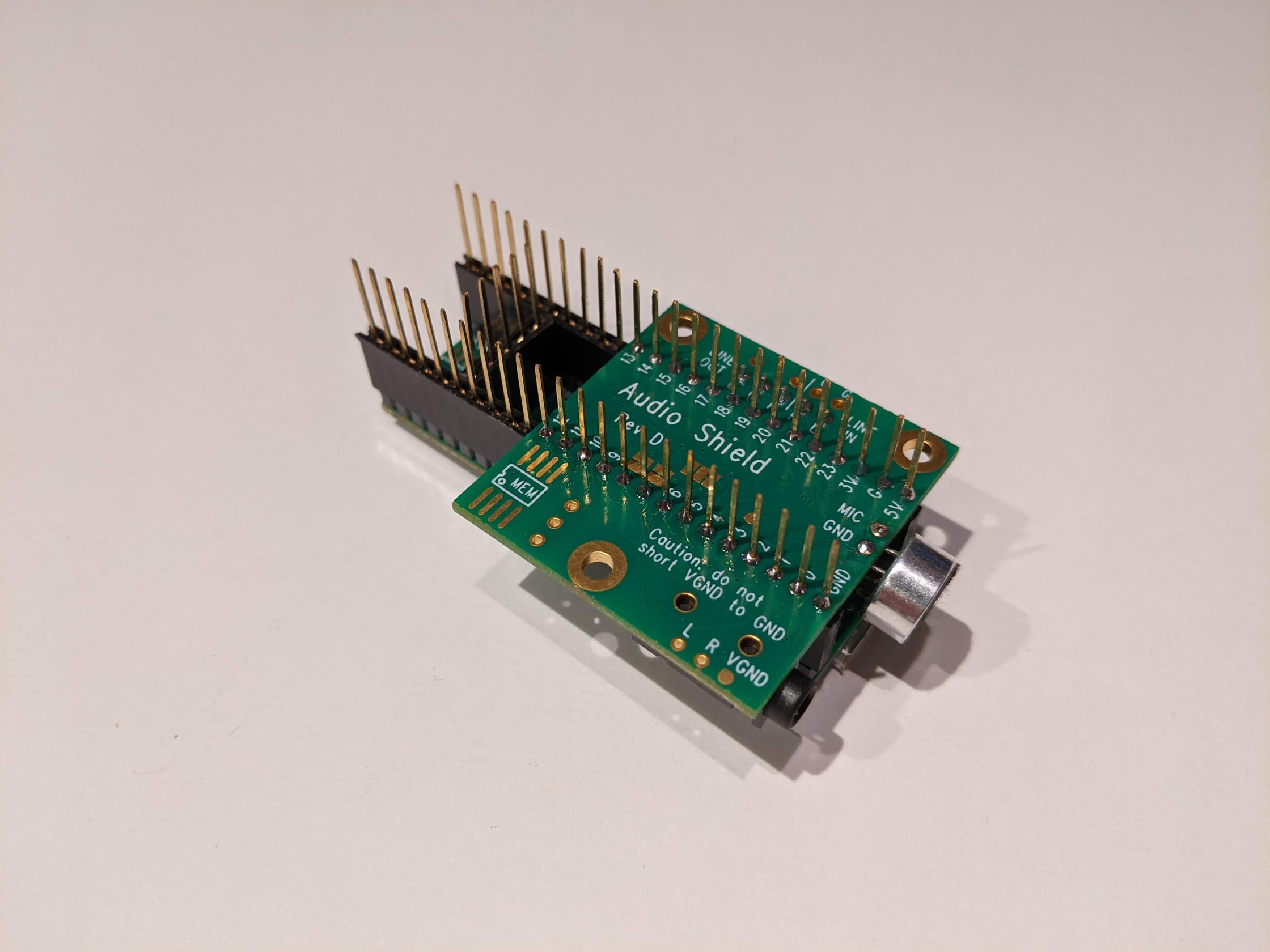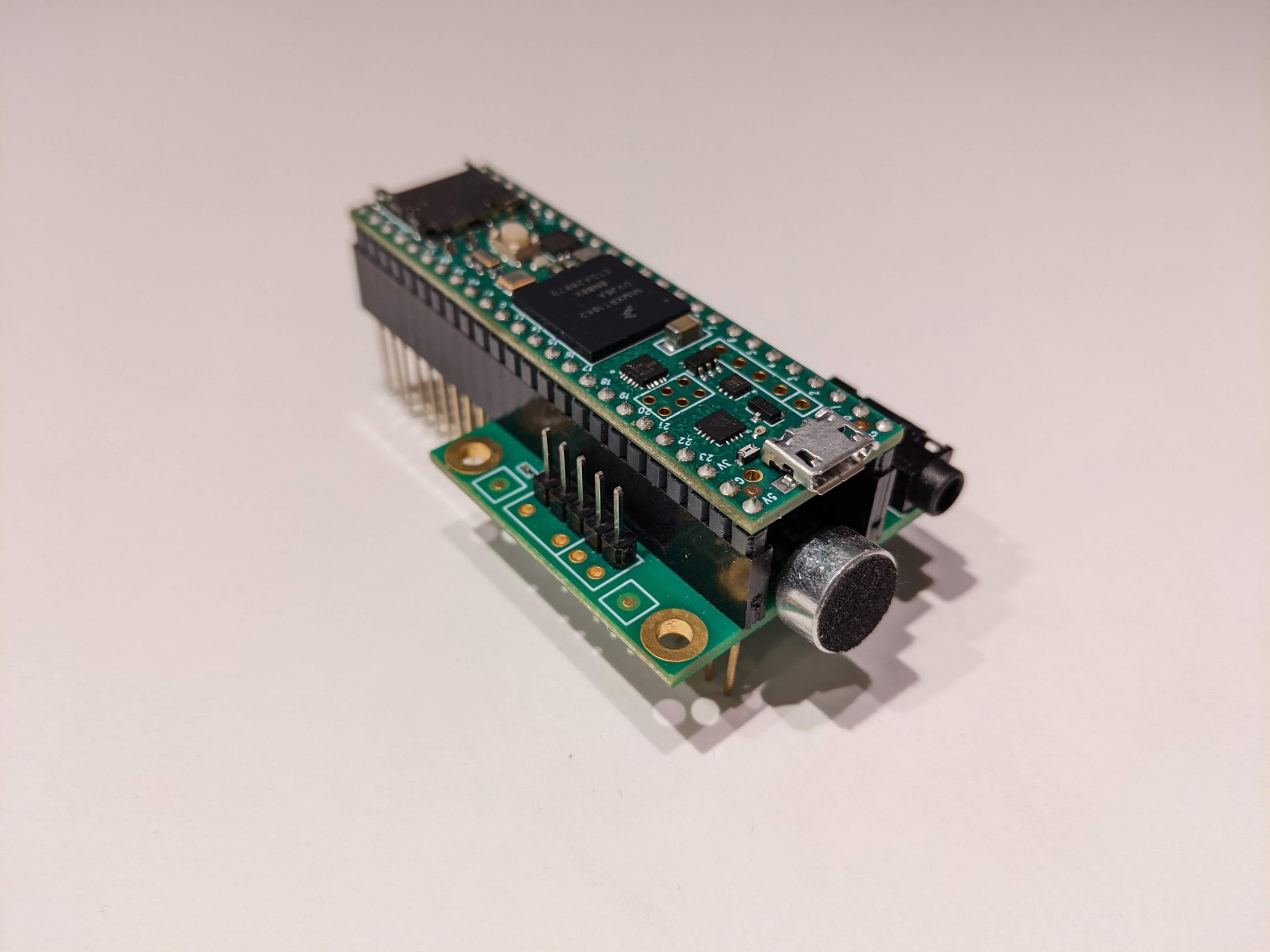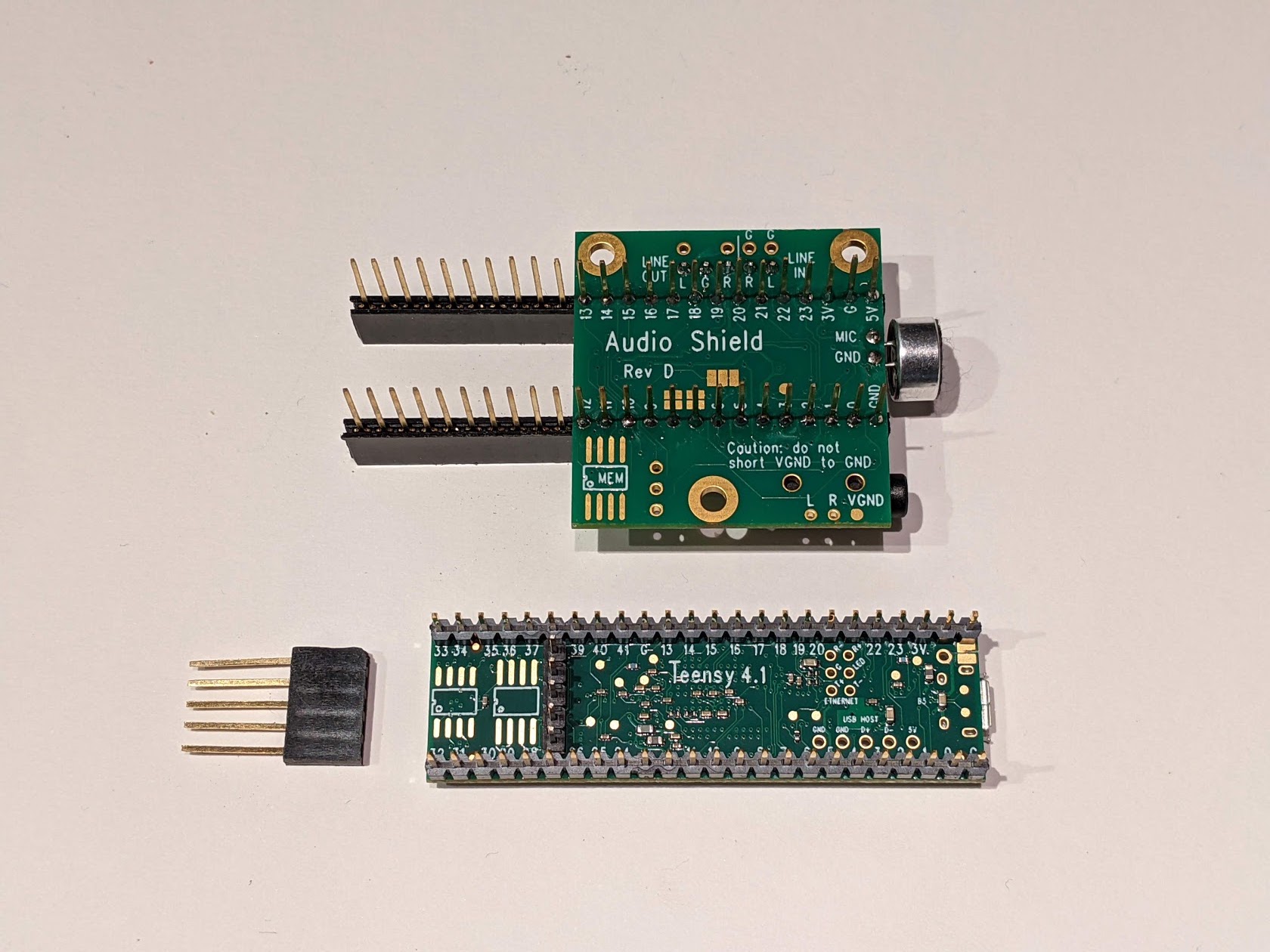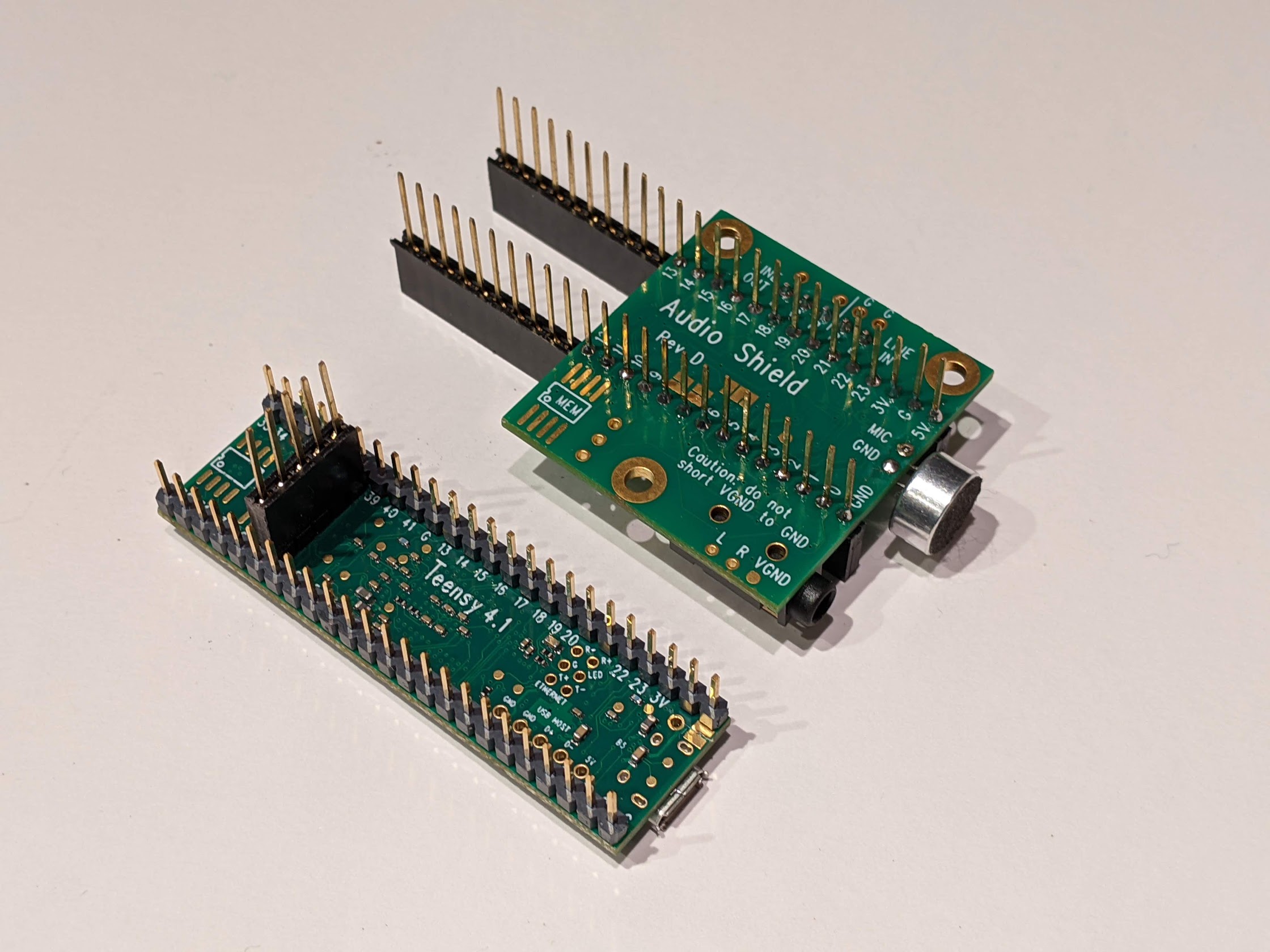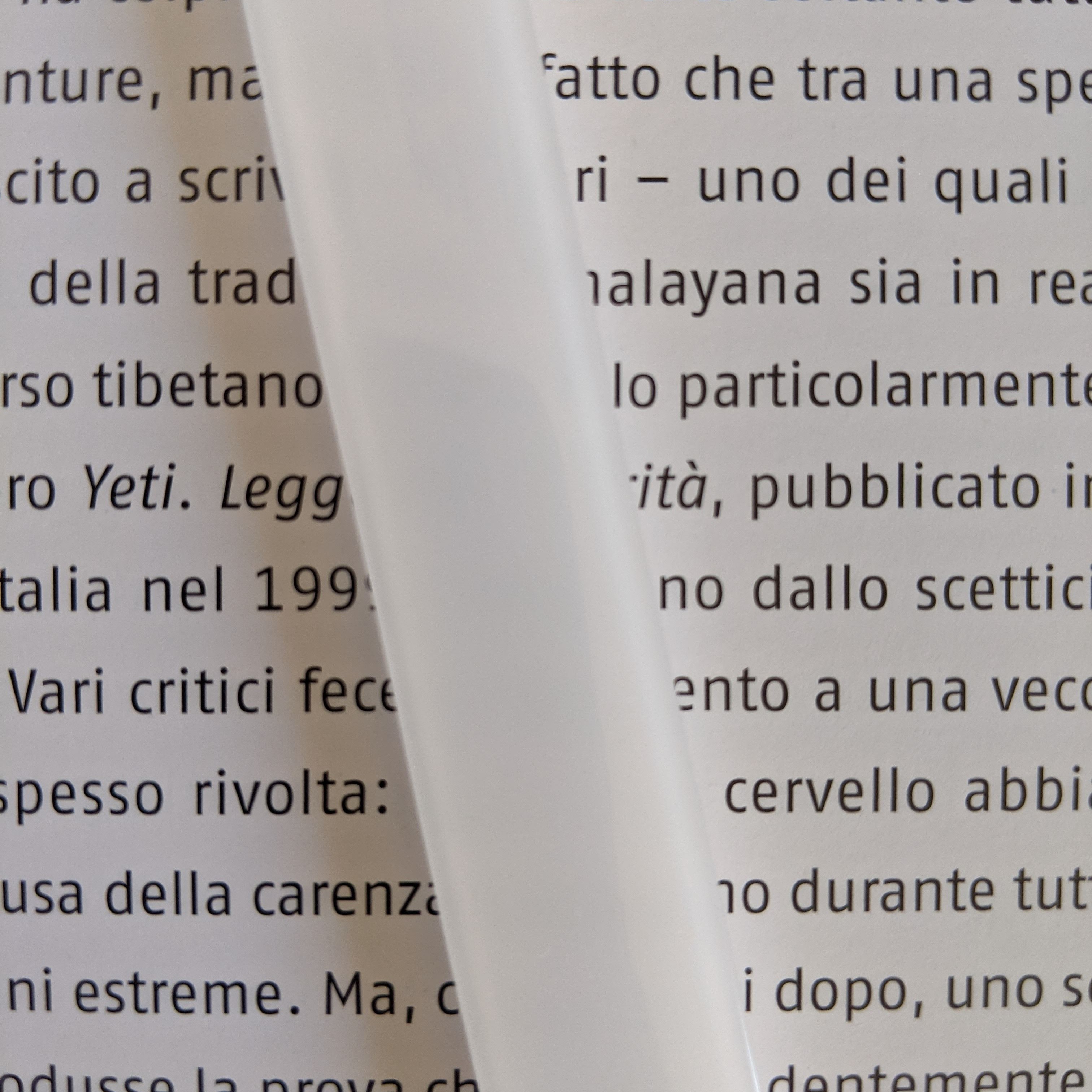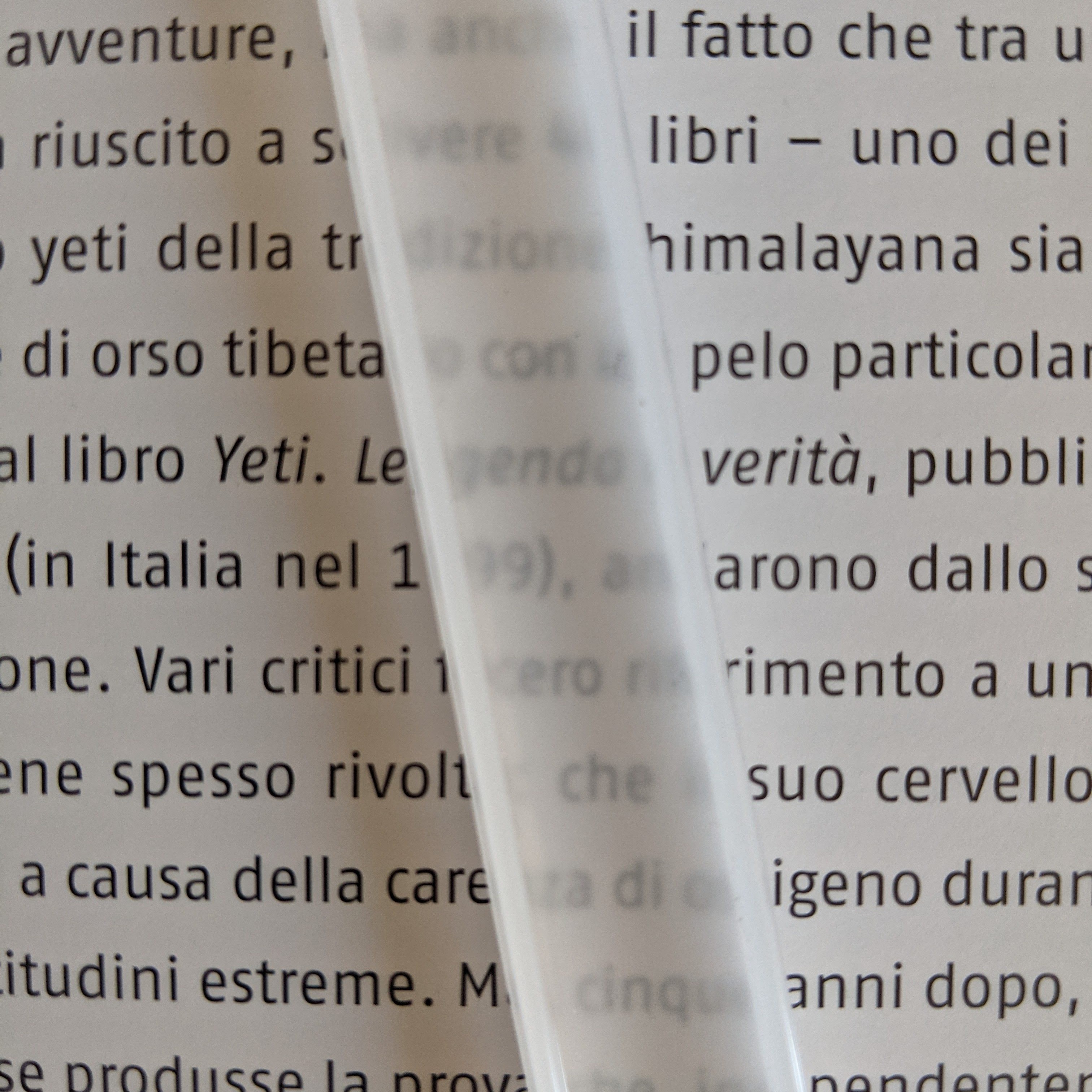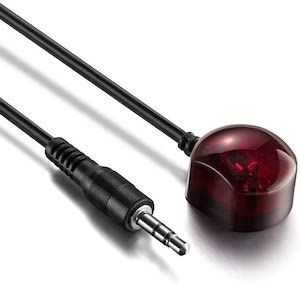Sexy, audio-responsive effects on LED strips.
For Teensy 4 with Audio Adapter Board, by PJRC.
Shooting video of LEDs is very tricky. Getting the right exposure, focus and colors is not easy at all. I did my best, but the live effect from my couch is simply not comparable with what you get on video. I think the main reason is frame rate. This video has been shot at 60 fps, but the real animation runs at about 170 fps...
Effect showcase (version 3, April 2021)
I love lights, especially LED lights.
The main goals of this library are:
- to simplify the development of visual effects to be rendered on LED strips, by providing useful abstractions and helpers
- to provide runtime support for rendering simultaneous effects on multiple strips, controlling the transitions and adjusting parameters in real time
This work has been inspired by some very cool projects published on the Cine-Lights YouTube channel. Some of the effects still keep the same name as originally given by the author, even though they have been reimplemented from scratch and might look very different.
Note: at some point, the author decided to go closed-source, distributing compiled (.hex) files only.
This library is designed around the awesome Teensy 4 Development Board, available as Teensy 4.0 or Teensy 4.1, which has been chosen for a number of reasons:
- It's an extremely capable Arduino-compatible board, running an ARM Cortex-M7 at 600 MHz with a floating point math unit, 64 & 32 bits;
- It can be combined with the Audio Adapter Board for audio I/O and processing;
- It comes with a large set of libraries including two great ones by Paul Stoffregen (Audio and WS2812Serial), described below;
- It's relatively cheap, compared to what it offers.
The Audio Adapter Board rev. D (specific for Teensy 4.x) provides CD-quality stereo ADC/DAC and hardware processing of audio signals. An optional microphone can be soldered to the board to provide software-switchable mono microphone input, in addition to stereo line input.
Teensy 4.0 provides five serial ports suitable for non-blocking LED driving, while Teensy 4.1 provides a total of eight. However, when using the Audio Adapter Board, Serial2 and Serial5 are unavailable, leaving us with three channels for Teensy 4.0 and six for Teensy 4.1.
Teensy 4 internal voltage is 3.3v and all I/O ports operate exclusively at this voltage, thus a level shifter (74HCT245) is required to reliably drive WS2812B LEDs with 5v signals.
I've designed a couple of custom PCBs, available in the hardware directory: one for Teensy 4.0, the other one for Teensy 4.1, housing connectors (power, IR receiver and LEDs), the DIL socket for the 74HCT245 IC, and a pair of stripline sockets for the Teensy, plus a few passive components. The Audio Adapter Board is sandwiched between the main board and the Teensy using long-terminal stripline connectors soldered to the Audio Adapter Board.
PCBs have been designed using EAGLE PCB and built by JLCPCB.
- POWER: Power (GND, +5v)
- IR-RECV: IR receiver (GND, Data, +3.3v)
- LED1-4: LEDs (CH1, CH2, CH3, CH3)
Note: CH3 is repeated because there are only three independent outputs
- POWER: Power (GND, +5v)
- IR-RECV: IR receiver (GND, Data, +3.3v)
- PROGR: Program button
- LED1-4: LEDs (CH1, CH2, CH3, CH4)
- LED5-7: LEDs (CH5, CH6, CH6, CH6)
Note: CH6 is repeated because there are only six independent outputs
For my projects I prefer the high density WS2812B LED strips (144 LED/m) with semi-transparent diffuser, because they look amazing at short distance. I'm providing photos of the diffuser on top of a printed page, to give you an idea of the transparency.
Strips can be any length and they don't need to be matched. However, being channels driven in parallel, the global update rate is the update rate of the longest strip. Update rate can be calculated multiplying the time required for transmitting RGB data for a single WS2812B LED (30us) by the number of the LEDs in the strip. With 6 channels available, up to 3324 LEDs can be driven at 60fps, or up to 1662 at 120fps. In my home application (about 800 LEDs), the longest strip has 192 LEDs, which translates to about 170fps.
Please be aware that the power rails on the strips have a non-negligible resistance, which would inevitably cause a voltage drop over distance. The higher the current, the higher the voltage drop (ohm's law). Total current is the sum of the current flowing through individual LEDs, which in turn depends on the RGB values. So, depending on the instantaneous state of the LEDs in the strip, the voltage drop could be enough to cause malfunctioning. To overcome this problem, you might need to inject power also at the end of the strip and, if it's very long, every n LEDs (n to be determined).
Personally, I never had to do this, even when driving 240 LEDs at full brightness, but copper thickness of the power rails might differ from one producer to another.
I suggest using excellent quality power supplies. A faulty one can easily destroy your hardware and can even become a threat for your life!
One of my favorite brands is Traco Power.
For connecting strips to the controller I use professional Neutrik speakON connectors: NL4FX on the cable and NL4MP on the controller.
They are rugged, super reliable connectors designed for connecting audio amplifiers to speakers, but they work amazingly well for this purpose too. Current rating is 40A (continuous) and they have four contacts, so one connector can bring power and signals to two strips using a 4-wire cable.
Any common infrared receiver, like TSOP4838 or similar, would be fine. In my projects I'm using an external one (search for "infrared extender cable"), as they usually come with a convenient red filter which increases the sensitivity by removing unwanted wavelengths.
Code is built around four awesome libraries:
- FastLED, for driving LED strips
- WS2812Serial, for non-blocking driving of WS28128B LEDs
- Audio, for sophisticated real time processing of audio signal
- IRMP, for decoding IR remote controller codes (basically any spare remote can be adapted)
Code has been crafted carefully, splitting responsibilites across a number of classes and introducing several useful abstractions.
All effects:
- are self-contained (all state is in own private class members)
- don't depend on strip length (they adapt to strip length or use normalized addressing)
- don't depend on main loop frequency (they rely on timers so that animation speed doesn't depend on global update rate)
Teensy 4 is a very powerful device. It supports floating point math in hardware with no performance penalty, so I've decided to free myself from the burden of using integer math for representing decimal values. Also, it has got plenty of flash and RAM, so I've also traded code size and extreme performance optimizations with cleaner code structure.
Strip is the abstract class for strip implementations (below), providing convenience methods for absolute (integer, 0 to pixel count - 1) or normalized (double, 0 to 1) LED addressing. It makes it easier to manipulate strips in a length-agnostic way.
PhysicalStrip wraps a FastLED CRGBSet (or CRGBArray), i.e. a physical strip connected to a pin.
ReversedStrip wraps an instance of Strip for reversing its behavior.
Example
Strip A = PhysicalStrip(...) => [3, 2, 1]
Strip B = ReversedStrip(A) => [1, 2, 3]
JoinedStrip wraps two instances of Strip into a single virtual strip, with an optional gap, i.e. the number of missing LEDs between the two strips.
Example 1 - two strips with the same orientation
Strip A = PhysicalStrip(...) => [A1, A2, A3, A4]
Strip B = PhysicalStrip(...) => [B1, B2, B4, B4, B5, B6]
Strip C = JoinedStrip(A, B) => [A1, A2, A3, A4, B1, B2, B3, B4, B5, B6]
Example 2 - two strips with the same, but inverted, orientation
Strip A = PhysicalStrip(...) => [A5, A4, A3, A2, A1] // inverted orientation
Strip B = PhysicalStrip(...) => [B5, B4, B3, B2, B1] // inverted orientation
Strip C = JoinedStrip(B, A) => [B5, B4, B3, B2, B1, A5, A4, A3, A2, A1]
Strip D = ReversedStrip(C) => [A1, A2, A3, A4, A5, B1, B2, B3, B4, B5]
Example 3 - two strips with opposite orientations
Strip A = PhysicalStrip(...) => [A1, A2, A3, A4, A5]
Strip B = PhysicalStrip(...) => [B5, B4, B3, B2, B1] // inverted orientation
Strip C = ReversedStrip(B) => [B1, B2, B4, B4, B5]
Strip D = JoinedStrip(A, C) => [A1, A2, A3, A4, A5, B1, B2, B3, B4, B5]
SubStrip wraps an instance of Strip for addressing a subsection.
Example 1
Strip A = PhysicalStrip(...) => [A1, A2, A3, A4, A5, A6]
Strip B = SubStrip(A, 2, 5) => [A3, A4, A5, A6]
Example 2
Strip A = PhysicalStrip(...) => [A1, A2, A3, A4]
Strip B = PhysicalStrip(...) => [B1, B2, B4, B4, B5, B6]
Strip C = JoinedStrip(A, B) => [A1, A2, A3, A4, B1, B2, B3, B4, B5, B6]
Strip D = SubStrip(C, 2, 6) => [A3, A4, B1, B2, B3]
All Strip implementations expose a buffered() method which returns an instance of BufferedStrip wrapping the underlying strip.
This is very useful for composing multiple effects rendered on the same LEDs, when one or more effects alter the underlying strip using methods like fade, blur, shiftUp or shiftDown.
A buffered strip behaves like the parent strip, but it writes to its internal LED buffer, instead of delegating to the parent strip. At the end of the loop any buffered Strip is automatically flushed, merging (i.e. adding) its content into the underlying strip.
This makes it possible, for example, to superimpose a fading effect (e.g. VU2) on top of another effect (e.g. Matrix) without fading it. See provided examples.
Fx is the abstract class you'll need to extend for defining your effects (see Implementing your effects).
It defines two abstract methods to be implemented by any effect:
- void reset(), called when the effect is selected or reset;
- void loop(), called by the main loop when the effect is selected.
See provided effects for examples.
Stage is the abstract class you'll need to extend for defining your setup (see Implementing your stage). It provides methods for adding strips and effects to your stage and to data to the Controller. It is also the right place for calling native FastLED methods for setting color correction and maximum allowed power, to comply with your power supply limits.
Do not call FastLED.setBrightness() as global brightness is handled by the Brightness class.
Two sample implementations are provided in the examples directory:
- example1 (4 channels on Teensy 4.1) is my current living room setup: the left and right strips (192 leds, 144 led/m) are placed side by side (in opposite directions) in a single 2.7m long aluminium bar between a piece of furniture (where the tv set is placed) and the floor, pointing outwards, while the top strip (169 leds, 60 led/m) is placed on the wall (behind the tv set) at about half a meter from ceiling, pointing upwards. Well, there's a fourth strip called xmasTree, guess what it is :-)
- example2 (2 channels on Teensy 4.0) is... my kids' room setup.
Multiplex is a virtual effect (it implements the Fx interface) which combines up to nine effects to be played in parallel, usually on distinct channels, as if they were one.
Controller exposes high-level actions for the remotes to invoke (e.g. play, pause, stop, increaseBrightness, etc.). It takes care of displaying the selected effect, cycling effects in manual or timed mode, loading and storing effect speed from non-volatile memory and for temporarily displaying systems effects (e.g. for setting input level, cycle speed, effect speed, etc.)
Select the stereo line input and setting the input level (0 to 15). This is the method to be called in your main.cpp for selecting the line input at start.
Select the mono mic input and setting the gain (0 to 63). This is the method to be called in your main.cpp for selecting the mic input at start.
Enter input sensitivity setting mode. If already in input sensitivity setting mode, toggle stereo line input / mono microphone input.
When in input sensitivity setting, a virtual slider fx replaces the currently selected fx for providing a visual indication of:
- current input sensitivity
- current audio signal peak and peak hold
- beat detected (peak hold indicator turn cyan)
- clipping detected (peak hold indicator turns red)
Enter input sensitivity setting mode. If already in input sensitivity setting mode, increase the sensitivity for the active input.
Enter input sensitivity setting mode. If already in input sensitivity setting mode, decrease the sensitivity for the active input.
Reset current effect.
Increase global brightness.
Decrease global brightness.
Set a numeric value for the current parameter (can be effect number, input sensitivity, etc., depending on current context).
Increase the current parameter (can be effect number, input sensitivity, etc., depending on current context).
Decrease the current parameter (can be effect number, input sensitivity, etc., depending on current context).
Select fx by index number.
Select previous fx.
Select next fx.
Select a random fx.
Enter timed play mode (either sequential or shuffle, based on last selection).
Enter timed/sequential play mode.
Enter timer/shuffle play mode.
Enter manual play mode.
Toggle timed/manual play mode.
Fade out all strips and enter stop mode.
Enter cycle speed setting mode.
A virtual slider fx replaces the currently selected fx for providing a visual indication of the current value.
In this mode setParam(0..10), increaseParam() and decreaseParam() can be used to change the value.
Enter cycle speed setting mode and set cycle speed (0..10).
When in cycle speed setting mode, a virtual slider fx replaces the currently selected fx for providing a visual indication of the current value.
Enter cycle speed setting mode and increase cycle speed.
Enter cycle speed setting mode and decrease cycle speed.
Enter fx speed setting mode.
When in fx speed setting mode, a virtual slider fx replaces the currently selected fx for providing a visual indication of the current value.
Enter fx speed setting mode and set cycle speed (0..10).
Enter fx speed setting mode and increase fx speed.
Enter fx speed setting mode and decrease fx speed.
Effects running in parallel on distinct strips are independent instances with no shared data.
State keeps shared, read-only state for use by any effect (mainly a couple of rotating hue values).
AudioChannel consumes instantaneous peak, rms and fft readings provided by the Audio library for the three channels (left, right and mono), and exposes them along with derived indicators: peakSmooth, peakHold, signalDetected, beatDetected, clipping.
| Property | Description |
|---|---|
| peak | the most recent peak value reported by Audio Library (0 to 1) |
| rms | the most recent rms value reported by Audio Library (0 to 1) |
| fft | the most recent fft bins reported by Audio Library (0 to 1) |
| peakSmooth | follows peak when larger, otherwise loses 1% every 10ms (approx) |
| peakHold | follows peak when larger, otherwise loses 0.1% every 10ms (approx) |
| signalDetected | true if a signal of minimum amplitude 0.01 (0 to 1) was detected in the last 10 seconds |
| beatDetected | true if a beat is detected |
| clipping | true if the signal exceeds 0.99% of maximum value |
Beat detection is implemented by feeding an instance of PeakDetector with the RMS values, which represent the energy content of the signal, calculated from a low-pass filtered copy of the original signal. Input values are stored in a circular buffer, on which moving average and standard deviation are calculated and used for discriminating peaks with sufficient energy from normal signal fluctuations.
AudioChannel provides a beatDetected property, but it is instantaneous (i.e. recalculated at every loop). This means that if your effect doesn't read that property at every loop (i.e. only under certain conditions, or when a timer has expired) it might miss it.
AudioTrigger provides a convenient way for triggering effects based on audio, storing the beatDetected status over multiple loops. After reading the trigger value, it's automatically reset. Additionally, it can trigger effects randomly, when no signal is detected. The number of random events per second can be specified independently for when a signal is detected or not.
Remote is the abstract class you'll need to extend for supporting your infrared remote. Basically, its purpose is to match remote keypresses with Controller high-level actions.
In the provided examples I'm using a Sony RM-D420, but more or less any spare remote can be used.
For adding your remote you'll need to:
- flash the IRMP AllProtocols example (be sure to change input pin to 22)
- take note of the code detected for each keypress on the remote
- extend the provided Remote class with your implementation (e.g. MyRemote.h), matching Controller actions with remote keys.
See SonyRemote_RMD420.h in example1 or example2 as a reference.
- Remote implementation, because of some some limitation of the IRMP library, must be self-contained in the .h file (it cannot be split in .h/.cpp files).
- Add the relevant #define for enabling the your remote's IR protocol (see IRMP documentation) before importing the library, i.e. at the top of main.cpp.
Brightness controls... global brightness. It also takes care of rendering quick flashes for providing a visual feedback of buttons pressed on the remote control.
The foundation for the majority of the effects implemented so far is the HarmonicMotion class, which implements physics for the harmonic motion. It emulates the behavior of an object linked with a spring and a damper to a fixed point, with given initial position, fixed point position, velocity, acceleration, elastic constant of the spring, damping, lower and upper bounds with rebound coefficients. External acceleration (e.g. gravity) is also supported.
Additionally, it provides methods for setting critical damping (no oscillations) or detecting when the system has reached a reasonably stable state (i.e. not moving anymore because all energy has been dissipated or because it's locked in a boundary position).
For simplicity the harmonic motion equation is normalized in respect to the mass, which is always equal to 1.
With proper settings of parameters, a large spectrum of behaviors can be represented. Here is a short list of some common ones:
- infinite oscillation (elastic constant > 0, damping = 0, position != fixed-point position and/or velocity != 0)
- damped oscillation (elastic constant > 0, damping > 0, position != fixed-point position and/or velocity != 0)
- critical damping (elastic constant > 0, damping = critical, position != fixed-point position and/or velocity != 0)
- constant speed (elastic constant = 0, damping = 0, acceleration = 0, velocity != 0)
- constant acceleration (elastic constant = 0, damping = 0, acceleration != 0)
- speed-limited acceleration (elastic constant = 0, damping > 0, acceleration != 0)
Acceleration can be set up to the third order, using 1, 2 or 3 coefficients:
- a1: first order acceleration (constant)
- a2: second order acceleration (acceleration of a1)
- a3: third order acceleration (acceleration of a2)
The object can be rendered in different ways, which can be combined. It can:
- be mirrored:, for rendering twin objects symmetrical in respect to the fixed point;
- be filled, for filling with color the segment between the object and the fixed point (or between the two objects, if mirrored);
- have a range, for rendering the object (or the two objects, if mirrored) as a segment with given starting and ending offset (e.g. a range -2 to 5 renders a segment starting 2 pixels before the nominal position and ending 5 pixels after).
Lower and upper bounds can be set with the respective rebound coefficients (r), for instantaneously changing the speed by multiplying it by the rebound factor:
- r < -1: instantaneous rebound with speed increase
- r = -1: instantaneous perfect rebound
- -1 > r > 0: instantaneous rebound with speed decrease
- r = 0: instantaneous stop (default)
- 0 > r > 1: instantaneous speed decrease (useless)
- r = 1: no bound (no speed change)
- r > 1: instantaneous speed increase (useless)
When setting bounds, a third parameter (b) can be specified for specifying the boundary of the object to be used as a trigger:
- b = 0: the nominal position (default)
- b = -1: the outer edge of the segment (for triggering when the segment is completely within the bound)
- b = 1: the inner edge of the segment (for triggering when the segment is completely past the bound)
Some very weird behavior can be obtained by using values not possible in the real world, like negative elastic constant, negative damping, or rebound coefficients whose absolute value is greater than one.
Please note all parameters can be changed during the animation (in the loop method) for implementing discontinuities or any kind of non-standard behavior.
Most effects use arrays of HarmonicMotion instances. A single Teensy 4 can animate a huge number of them at the same time, for very complex animations.
Initialize an HarmonicMotion instance with a Strip pointer.
Reset all parameters to default value.
Set color of the object.
Set acceleration, by providing a0 and optional higher order acceleration constants.
Set elastic constant of the spring.
Set damping.
Set damping to critical damping value (2 * sqrt(k)).
Set fixed point position.
Set fixed point position randomly.
Set position of the object.
Set position of the object randomly.
Set velocity of the object.
Set upper bound, with optional rebound and bound trigger.
Bound trigger only makes sense when a range is used (i.e. a segment is rendered vs a single pixel). Its value determines when the bound is triggered:
- 0: bound is triggered when the nominal position reaches the bound (default)
- 1: bound is triggered when the starting position of the range reaches the bound (i.e. the segment is past the bound)
- -1: bound is triggered when the ending position of the range reaches the bound (i.e. the segment is within the bound)
Set lower bound, with optional rebound and bound trigger.
Bound trigger only makes sense when a range is used (i.e. a segment is rendered vs a single pixel). Its value determines when the bound is triggered:
- 0: bound is triggered when the nominal position reaches the bound (default)
- 1: bound is triggered when the ending position of the range reaches the bound (i.e. the segment is past the bound)
- -1: bound is triggered when the starting position of the range reaches the bound (i.e. the segment is within the bound)
Set the starting and ending offset of the segment to be rendered (instead of a single point), in respect to the nominal position.
Set mirrored mode (twin objects symmetrical to the fixed point).
Set fill mode (fill the segment between the object nominae position and the fixed point position with color.
Show or hide the object when its position is stable.
Add or overwrite existing color data.
Get current fixed point position.
Get current object position.
Get current object velocity.
Detect if position is stable (not moving anymore). Position is considered to be stable when one of the following conditions become true:
- both the overall acceleration and velocity are negligible
- the overall acceleration is negative, the object is locked at lower bound and velocity is negligible
- the overall acceleration is positive, the object is locked at upper bound and velocity is negligible
Main loop.
All setters return the current instance, for easy chaining of methods.
The following example would animate a 6-pixel red segment starting at position 0 with random speed between 100 and 200 pixel/s, rebounding past the upper bound and stopping within the lower bound.
item.reset()
.setColor(CRGB::Red)
.setPosition(0)
.setVelocity(random8(100, 200))
.setUpperBound(strip->last(), -1, 1)
.setLowerBound(0, 0, -1)
.setRange(0, 5);
You can create new effects by extending the Fx class.
I suggest you to look at the provided effects, as they are self contained, quite compact in size, and supposedly easy to understand.
You can implement your own stage by extending the Stage class. See provided examples as a reference.
Please be free to contact me, open issues and submit PRs.
Happy Stripteasing! :-)

